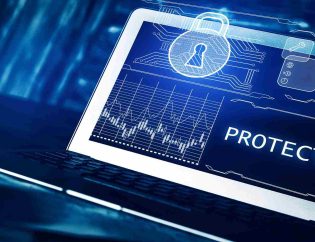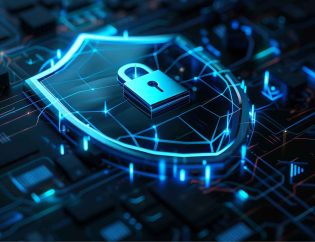
Introduction
In today’s digital landscape, endpoint device management plays a pivotal role in ensuring the security and efficiency of modern businesses. By providing robust control over endpoint devices, organizations can mitigate risks, enhance productivity and streamline operations. This article explores the significance of endpoint device management and its impact on businesses in detail.
Table of Contents
What is Endpoint Device Management?
Endpoint device management refers to the processes and tools used to monitor, secure and manage endpoint devices such as laptops, smartphones and IoT devices. These devices serve as gateways to corporate networks, making their proper management critical to business security. Businesses use this to ensure that all devices connecting to their networks are safe, updated and functioning well. By implementing effective endpoint device management, companies can protect sensitive data, prevent unauthorized access and maintain smooth business operations.
Endpoint management also helps organizations stay ahead of security threats by detecting vulnerabilities early. This ensures that all devices comply with company policies and meet industry standards. Using endpoint management tools, businesses can remotely monitor devices, enforce updates and address issues in real-time. Companies like Hyper Secure and other Endpoint Security Company make it easy to manage and secure endpoints efficiently, helping businesses reduce risks and boost productivity.
Importance of Endpoint Device Management in Businesses
Endpoint device management ensures businesses can:
Secure sensitive data:
Protect against unauthorized access and data breaches.
Improve operational efficiency:
Reduce downtime and optimize device performance.
Ensure compliance:
Meet regulatory requirements for data protection and security.
By addressing vulnerabilities, businesses create a more resilient IT infrastructure. Proper management of endpoint devices ensures that critical business operations are not disrupted, which leads to better productivity and peace of mind for IT teams.
Key Benefits of Effective Endpoint Device Management
Enhanced Security:
Improved Productivity:
Cost Savings:
Scalability:
Endpoint Device Security Control: Strategies and Tools
Implementing strong endpoint device security control requires the following:
Access Control Policies:
Ensure only authorized personnel can access specific resources.
Regular Updates and Patches:
Keep devices up-to-date to address known vulnerabilities.
Encryption:
Protect sensitive data on endpoint devices.
Endpoint Detection and Response (EDR) Tools:
Monitor and mitigate threats in real-time.
| Strategy | Benefit |
|---|---|
| Access Control Policies | Prevent unauthorized access |
| Regular Updates | Mitigate vulnerabilities |
| Encryption | Protect sensitive information |
| EDR Tools | Real-time threat detection and response |
By adopting these strategies, businesses can significantly reduce the chances of cyberattacks and data breaches. These tools also make managing multiple devices much easier for IT teams.
Challenges in Managing Endpoint Devices
Despite its benefits, managing endpoint devices comes with challenges:
Diverse Device Ecosystem:
Managing a variety of devices with different operating systems.
Cybersecurity Threats:
Addressing evolving threats like ransomware and phishing.
Compliance Requirements:
Ensuring adherence to regulations like GDPR and HIPAA.
Resource Limitations:
Balancing IT budgets and workforce capabilities.
Businesses must be proactive in overcoming these challenges to maintain a secure and efficient network environment.
Endpoint device management is key for secure business operations. Monitor, secure and manage laptops, IoT and smartphones seamlessly. Learn how to stay ahead in the digital age! #Cybersecurity #EndpointManagement
— Hyper Secure (@HyperSecure) December 12, 2024
Customer Testimonial
“After implementing a robust endpoint device management system, our organization witnessed a 30% reduction in downtime and a significant improvement in data security.” – Jane Doe, IT Manager, SecureTech Solutions
Bullet Points Section
Key Features of Hyper Secure’s Endpoint Device Management:
Steps to Implement Endpoint Device Management:
By following these steps, businesses can establish a strong foundation for endpoint security and management.
FAQs
Q1: What is endpoint device management?
Endpoint device management involves monitoring, securing and managing devices like laptops, smartphones and IoT devices connected to a business network. It ensures these devices are safe and working efficiently.
Q2: Why is endpoint device security control important?
It ensures data security, protects against breaches and enhances compliance with regulations. Endpoint security device control is essential for safeguarding business networks.
Q3: What tools are used for endpoint device management?
Common tools include Endpoint Detection and Response (EDR), Mobile Device Management (MDM) and encryption software. These tools help manage and secure devices.
Q4: What challenges do businesses face in endpoint management?
Challenges include managing diverse devices, evolving cybersecurity threats and compliance with regulations. Addressing these is vital for business success.
Q5: How can Hyper Secure assist with endpoint management?
Hyper Secure provides tailored solutions, real-time monitoring and advanced security tools to optimize endpoint management. They help businesses stay secure and efficient.
Conclusion
Effective endpoint device management is essential for securing data, enhancing productivity and supporting business growth. At Hyper Secure, we offer comprehensive solutions to address your endpoint management needs, ensuring your organization remains secure and efficient. Reach out to us to learn more.








